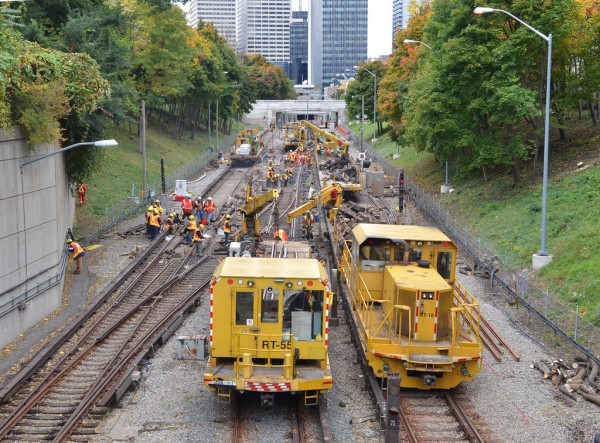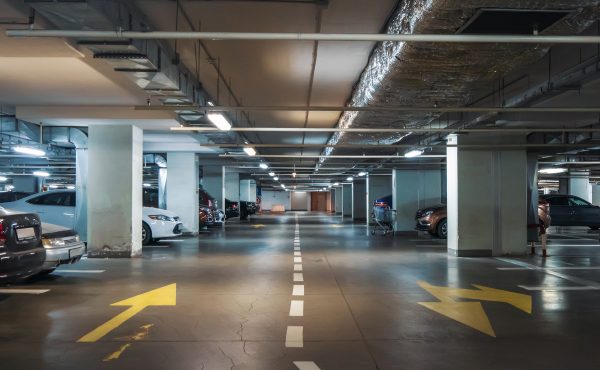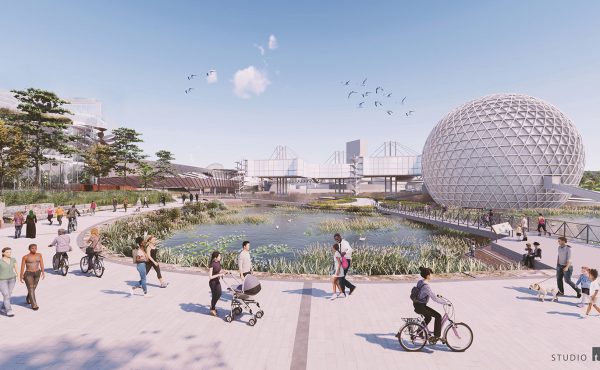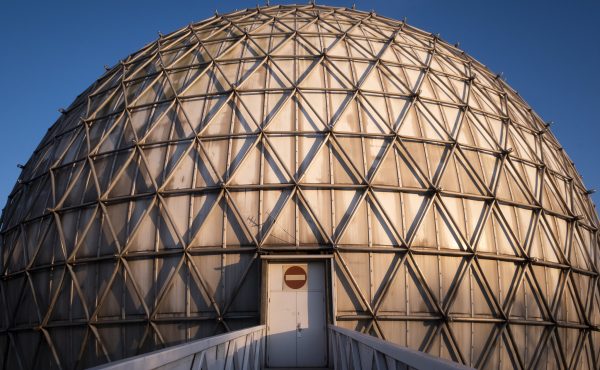Hold on, hold on, hold on.
Let’s just rewind a bit, past Wednesday’s Trudeau-palooza, to that interesting little moment last Tuesday when Ontario’s transportation minister Steven Del Duca dropped a bag containing $2 billion in the middle of Eglinton Avenue.
Don’t remember? Seeing, um, red?
A very brief recap: Del Duca revealed that Metrolinx and Infrastructure Ontario had finally settled on the value of a massive long-term alternative financing and procurement (AFP) contract to build and maintain the Eglinton Crosstown LRT. The glory moment in the Liberals’ announcement was that the $9.1 billion deal, with a private consortium, would cost $2 billion less than previously expected.
Cue the coronets?
Cue the hard questions.
For those who missed last week’s column here on Spacing, I pondered the question of what the province should do with the $300 to $400 million that Brampton council rejected by icing the northern portion of the $1.6 billion Hurontario-Main LRT, which, according to some of Brampton’s burgermeisters, would bring undesirable growth to the middle of the fastest growing city in Canada.
By happy coincidence, we can revisit a slightly different version of the question this week by asking what the Liberals intend to do with that $2 billion in savings — money that was earmarked for rapid transit in the 416, of all places.
The Liberals, after all, were clearly super eager to claim political credit for substantially whittling down the cost of a major transit project. So let’s play ball: If that’s the case, we should spend those savings on…transit!
Within the City of Toronto.
Where, not to put too fine a point on it, all that money would have been spent, had it not been for sharp-eyed bean-counters at Infrastructure Ontario.
The first point to ponder is whether or not Del Duca’s $2 billion find was a paper savings — a feel-good talking point for a government facing criticism for privatizing Hydro One and making odd payments to the teachers unions.
According to both Metrolinx and Infrastructure Ontario, the savings is on the long-term maintenance side of the contract. The capital cost of the 19-km project was originally valued at $5.3 billion, with another $6 billion earmarked for a 30-year maintenance component, according to government estimates. This latter portion is what came down in price.
It’s impossible to know how solid that original maintenance figure was. After all, Infrastructure Ontario last year came in for criticism from the auditor general, who found that the agency routinely over-stated the financial risks associated with public sector delivery of all sorts of provincial infrastructure projects.
The agency’s high-ball figures, the auditor general concluded, prompted the government to approve all sorts of procurements at inflated cost. The bottom line was that Ontario’s public-private partnership program ended up costing taxpayers $8 billion more than Queen’s Park would have spent with a traditional procurement strategy. (As the report notes, “More realistic budgets would enable Infrastructure Ontario to better assess the reasonableness of bids during the tender process.”)
A generous interpretation, then, might be that the province has responded positively to the AG’s critique, first by developing better estimates about how much the project should cost, and then by negotiating a more realistic design-build-finance-maintain deal for the Crosstown. In other words, real dollars not spent.
Before I explore the question of what to do with those savings, it’s worth pointing out that these cost reductions will impact the province’s annual operating outlays. Maintenance expenditures represent a combination of capital and operating costs – major equipment replacement on the one hand; cleaning and minor repairs on the other. And while I haven’t read the contract, my guess is that the consortium and IO/Metrolinx expect that those expenses will grow over time due to wear and tear on the system, and the life expectancy for specific elements.
All that said, the $2 billion does create new space in the province’s long-term fiscal plan (should such a document exist, which seems a bit dubious). In my mind, that space should be explicitly dedicated to supporting transit in Toronto. After all, once the Liberals indicated the government’s intention to underwrite, own and operate the Crosstown over the long term, it was acknowledging a long-term financial responsibility for that asset.
If those liabilities are now lower than previously thought, the savings should not be absorbed into general revenue or diverted to one of Metrolinx’s next phase projects, most of which are in the 905. (For the purposes of this discussion, I will take the government at its word and assume it has earmarked funds to build the Sheppard East and Finch West LRTs, and make the promised contributions to the Scarborough subway and Smart Track.)
Rather, let’s have a conversation about that $2 billion. From where I sit, a number of options present themselves:
- Using the annual saving to subsidize the TTC’s operating shortfall — a transfer introduced by Bill Davis in the 1970s, rescinded by the Harris Tories in 1996, and never re-instated by the Liberals;
- Dedicating those savings to either building or operating the Scarborough subway, which the Liberals worked so hard to engineer, and which will almost certainly cost more than the current estimates;
- Borrowing now against that $2 billion (i.e., the annual savings pay off the loan) and using the proceeds to build the Queen’s Quay East LRT;
- Borrowing now against the $2 billion and using the proceeds to kick-start the eastern half of the Downtown Relief Line.
The most important point is that the debate occurs. By trumpeting the $2 billion, the Liberals sought credit for being diligent with public dollars. But that’s the sound of one hand clapping. They must now engage with Toronto council — Hey Mayor Tory, I’m talking to you! — to figure out how to allocate those unspent dollars in a way that’s politically consistent with the initial intention behind the Crosstown.
That $2 billion is a massive sum. We mustn’t let it simply vanish into the haze while we’re riveted by events in Ottawa, and next episode of “Red is the New Green.”






5 comments
That $2b isn’t real money available to build anything. It is a saving on the operating budget starting in the early 2020s when the Crosstown opens, but that “saving” presumes that the money had been allocated in the first place. On a flat line basis, $2b savings on a 30-year contract is about $67m/year. That won’t build very much and you can’t borrow against it because this does not represent new revenue.
As a general issue, Metrolinx has not addressed the evolution of its operating budget as major new lines come into operation. That has always been left for the future, and there is never a public discussion of what happens as they evolve from a construction-focussed company to one with a big network of frequent commuter rail and local routes.
As you say, the whole business with IO postulating high public sector future costs and then showing a “saving” from the private sector bid is something of a shell game. The TTC is a mature system dealing with the costs of 50+ year old rapid transit infrastructure. The private bidder will not have to face, within the 30 year contract, a lot of the major system maintenance and replacement costs the TTC routinely deals with. Indeed they will have an incentive to avoid these toward the end of the contract unless they are compensated for the residual value of any investments they might make (e.g. replacing track at the 25 year mark).
But these are problems for governments to come, and meanwhile the Minister can have all the photo ops he needs for a few more rounds of election literature.
Use that money to tear down the Gardiner Expressway!!!!!
Metrolinx should use the money to fund Eglinton Connects (http://toronto.ca/eglinton) , the as-yet unfunded $150+ million streetscape plan that goes with the Eglinton Crosstown LRT. It is completely absurd to have Metrolinx rebuild 100-200 metres in front of each station with a new streetscape design, while leaving the rest of the streetscape untouched (and worn out after 10 years of intensive construction).
DRL! DRL!
I don’t think the two billion is actually a pile of money available for other things, possibly just less that has to be borrowed, but accepting the argument that perhaps it does exist, the Crosstown still doesn’t connect to the airport. Seems silly to build something that ends within sight of Pearson. Not sure where it ends in the East, but I suspect the terminus is probably short of Rob Ford’s three stop “Gravy Line”